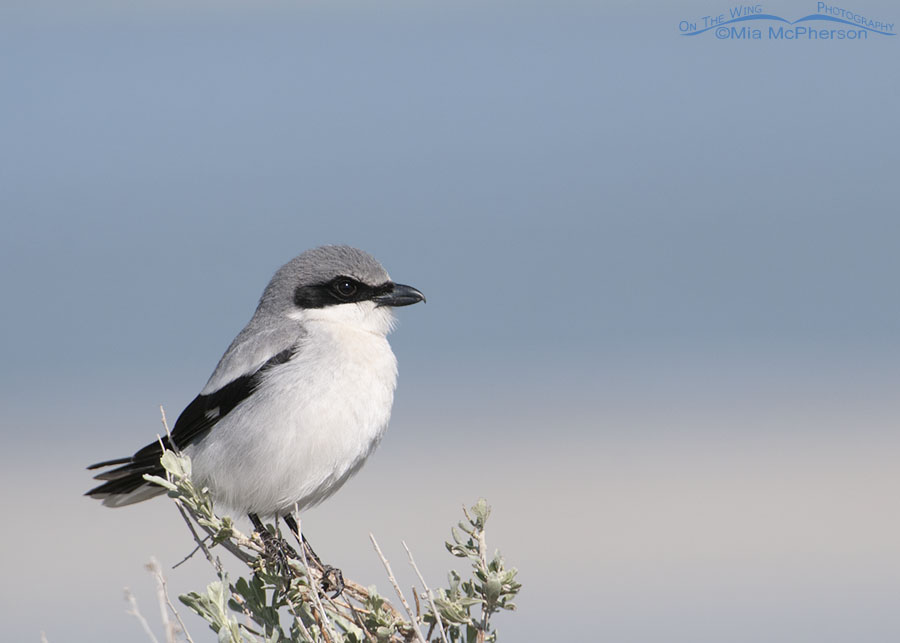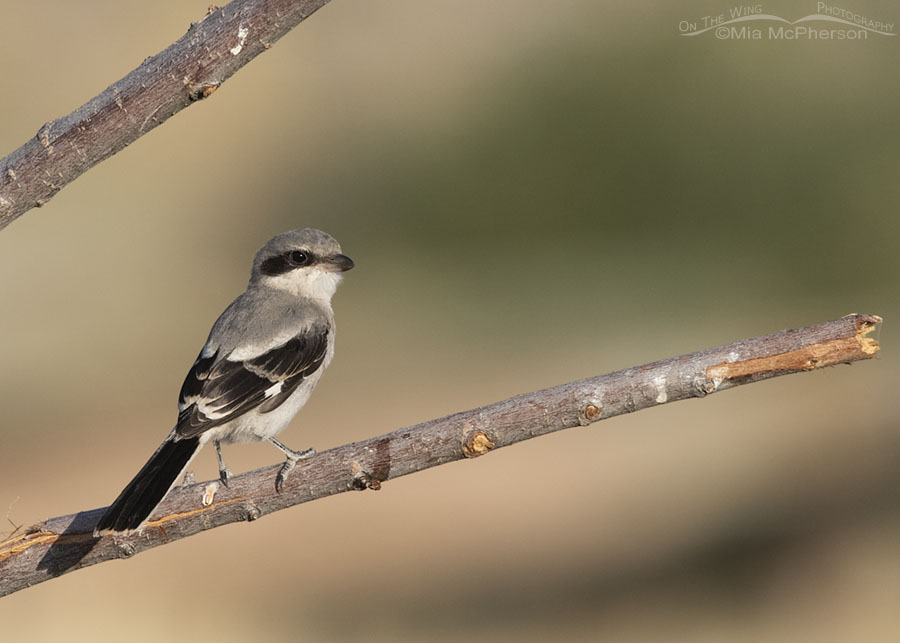 Adult Loggerhead Shrike perched on sage – Nikon D300, f7.1, 1/1000, ISO 320, +1.0 EV, Nikkor 200-400mm VR with 1.4x TC at 400mm, natural light
Adult Loggerhead Shrike perched on sage – Nikon D300, f7.1, 1/1000, ISO 320, +1.0 EV, Nikkor 200-400mm VR with 1.4x TC at 400mm, natural light
The past couple of times I have gone to Antelope Island I have seen and heard several Loggerhead Shrikes which was a nice because I haven’t seen as many of them the past couple of years as I did when I first moved to Utah. Part of the reason I haven’t seen as many on Antelope Island is that typically when the shrikes are busy building their nests the no-see-ums (biting gnats) are out in full force and I have started to avoid the island during that time because my reactions to the bites of the no-see-ums have gotten more severe over time.
In the past I have written that I wouldn’t let the biting gnats stop me from photographing on the island but I’ve had my eyes nearly swollen shut from just a single bite and have since gotten more careful about my exposure to the blood-sucking, irritating, awful gnats. I can’t photograph birds if I can’t see them!
I love seeing these songbird wanna-be-raptors though and even though their “songs” aren’t quite what we expect their songs still make me smile.
“Wanna-be-raptors”? I haven’t lost my marbles, I know they aren’t raptors but they do hunt down and dispatch prey plus they carry prey in their hooked bills and with their feet but these birds don’t literally qualify as raptors. They just have the attitudes of much larger, predatory birds.
 Immature Loggerhead Shrike perched on a broken branch – Nikon D810, f7.1, 1/1600, ISO 500, Nikkor 500mm VR with 1.4x TC, natural light
Immature Loggerhead Shrike perched on a broken branch – Nikon D810, f7.1, 1/1600, ISO 500, Nikkor 500mm VR with 1.4x TC, natural light
Loggerhead Shrikes breed on Antelope Island and in the lower elevations of northern Utah. The past couple of years when I have been avoiding the no-see-ums on Antelope Island I have spent much of my time up in the Wasatch, Oquirrh and Stansbury Mountains and I just don’t see the shrikes up at those elevations.
Both of these Loggerheads Shrikes were photographed on Antelope Island, the adult was photographed in April of 2014 and the immature shrike was photographed in August of 2015.
If I can find a protective head net that actually works I might just venture back out onto the island after the no-see-ums come out because I miss photographing nesting Loggerhead Shrikes. Any recommendations for head nets that truly work would be sincerely and deeply appreciated.
Life is good.
Mia
Click here to view more of my Loggerhead Shrike photos plus facts and information about this species.


They look so innocuous, with their chubby little bodies. Thank you for including the immature bird for contrast with the adult. Sometimes it’s tough to remember the fierce predator behind the roly-poly countenance.
Thank you as always for the sound track. Such a distinctive call – and I found it a bit incongrous with their ‘wanna be’ raptor status.
I learned of these birds through either Ron or yourself and always love it when they get a feature post.
Great shots of the little Shrikes Mia. I’m with you when it comes to no-see-ums, it’s not a fun day with them sucking your blood as you try to get a good photo. Have you tried no-see-um netting? Since I’m working on the island a lot I purchased a “no-see -um jacket that covers your whole upper torso, including your head. I hate to wear it but the other option is to bleed to death from their bites. I found one on Amazon: Coghlan’s Bug Jacket.
Sterling, I see that Coghlan’s makes a head net specifically for no-see-ums, I am going to have to find one of those and perhaps try the jacket too. Thanks so much for the info on Coghlan’s.